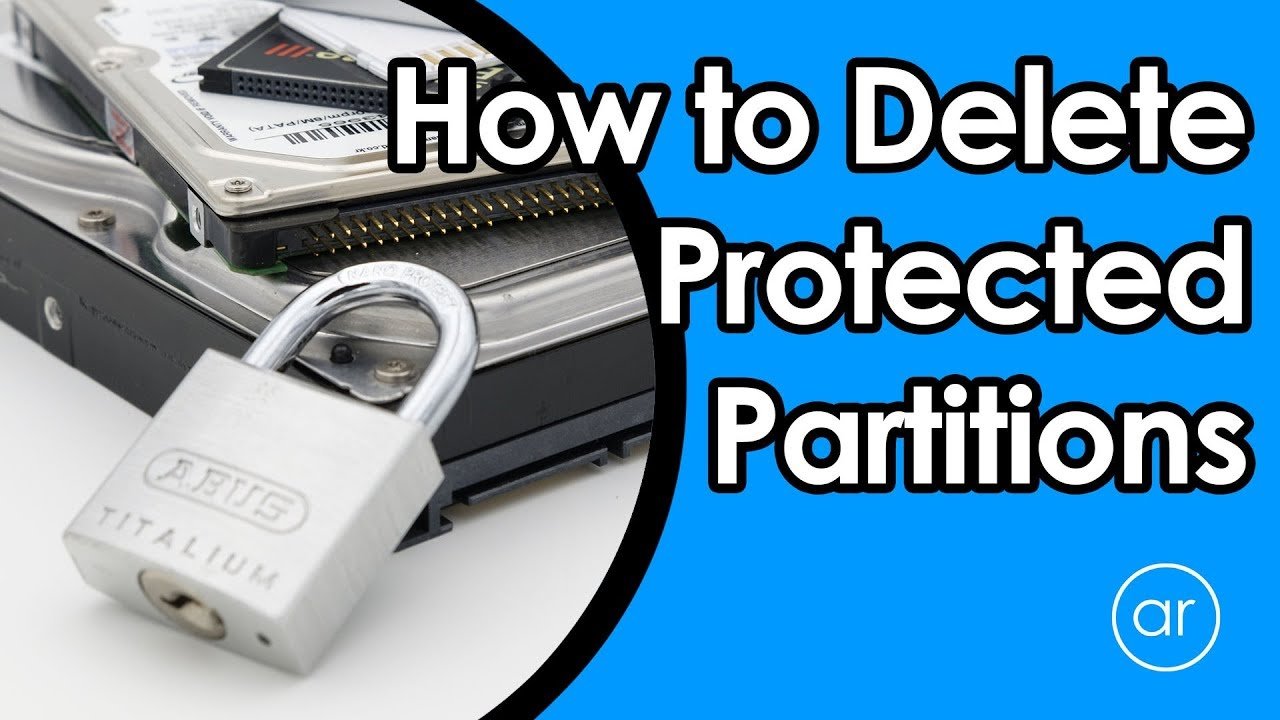Today, we’re going to delete disk partitions in Windows 10 that appear to be undetectable. These partitions can sometimes be labeled as recovery partitions or OEM partitions, but they all have one thing in common: they’re protected, making them impossible to delete from certain tools in Windows. The symptom is apparent when you look at a disk in the Disk Management utility of Windows. To start the utility, simply right-click the Windows button and choose Disk Management. Let me slide this over so I can show you in this corner of the desktop.
We have two disks, labeled 0 and 1. The partitions I want to delete are on disk 0, which shows five partitions. If I right-click on any one of these, you can see what options are available in the context-sensitive menu. On this first partition, Delete Volume is obviously greyed out. In fact, as I right-click on the subsequent ones, the option to delete doesn’t even show up. The second, third, and fourth partitions have only one selection. The fifth one actually does give me the ability to delete it, so I’ll go ahead and do that. Note that this isn’t my current Windows boot partition, which is on disk 1. This is actually an old Windows disk that I want to erase, so I can use it as a secondary storage disk. It will complain that it’s already in use, but I can go ahead and delete it because it’s just a copy of Windows. In a previously published video, I showed you how to clone a hard drive containing Windows to a bootable SSD drive.
I’m simply deleting the partitions from the hard drive so I can use it as secondary storage. That gives us four remaining partitions which are undetectable from Disk Management. The solution is to use a built-in command line utility in Windows called diskpart. Let’s go to our search bar and type “cmd,” which return the command prompt. I’ll right-click on it and run it as administrator. Let me move this up a little bit so we can see what happens graphically in the Disk Management screen. The first thing to do is execute diskpart, spelled d-i-s-k-p-a-r-t. It’s a command line disk partition utility and by typing “list disk” and then Enter, it gives us a list of all the physical drives in the computer. You can see disks 0 and 1 correspond to the same 0 and 1 in Disk Management. We now need to select the disk that has the partitions that we want to delete. Since the command line doesn’t have a graphical interface, we need to type “select disk 0” to select it. When I “list disk” again, you’ll see a star next to disks 0, indicating that it is selected, and that we’re ready to perform an operation on it.
Now, let’s list the partitions on this disk by typing “list partition.” You can see we have five partitions listed, even though Disk Management shows only four. Partition 2 is the one that’s missing, which means that not only is it undeletable, but it’s also hidden in Disk Management. It’s a small reserved partition that’s created by Windows, but I’d like to delete that also. Again, just like we selected a disk, we need to select a partition. If we list the partitions again, you’ll see the selection with a star. There is a shortcut for the word “partition.” I can type “list part,” and that’s the same as “list partition,” so from this point forward, I’ll use “part” instead of “partition.” Now that partition 1 is selected, we need to delete it. I’ll simply type “delete part” and press Enter. But because it’s a protected partition, the delete fails.
What we’ll need to do is type “delete part” and then add the argument “override,” and hit enter – and that does indeed delete the partition. We can confirm that in Disk Management, where the first partition is now allocated. Let’s list the partitions again, and notice that partition 1 is now gone. Let’s select parts 2, and try deleting that with “delete part.” Again, it fails because it’s protected, so I need to type “delete part override.” Now it’s just a matter of selecting and deleting the remaining partitions with the override flag. Let’s “select parts 3” and “delete part override.” Select the fourth one and delete it. And finally, “select parts 5” and delete the partition. Now when I list my partitions, they’re all gone. If we go to Disk Management, you’ll notice that it’s not responding, because it doesn’t like the fact that we’re trying to delete something from another process. So I’ll need to kill off the application, force close it, and then restart Disk Management. You can see that disk 0 is now clear of all partitions, with an unallocated space of the total hard drive.
At this point, I’m able to create my own volumes and partitions, and format them as I normally would.


Write a Comment